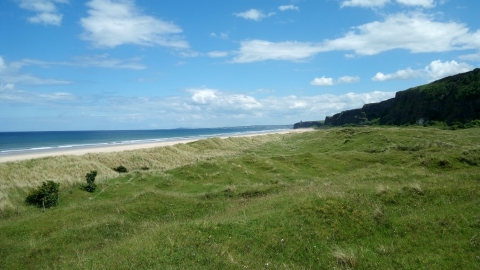
Umbra Nature Reserve
Location
Know before you go
Dogs
When to visit
Opening times
Open at all times, but access by permission only.Best time to visit
June to AugustAbout the reserve
This large and relatively undisturbed nature reserve, located in Co Derry\Londonderry, consists of species-rich dune grassland, wet dune slacks, scrub and woodland. It is home to an impressive array of flowering plants in summer, which in turn support an incredible variety of insects.
The nature reserve boasts a wealth of orchids such as marsh helleborine, early-purple, frog, bee, fragrant and pyramidal orchid. Other notable plants include adder’s-tongue, moonwort, grass-of-parnassus and creeping willow, as well as rare mosses such as wrinkle-leaved feather moss and lesser tamarisk moss.
Umbra is one of the best sites for butterflies in Northern Ireland - interesting species include cryptic wood white, small heath, grayling and dark green fritillary. It’s also a hotspot for moths, including rare species such as the scarce crimson and gold, and small eggar, but there are hundreds more.
The flower-rich areas with patches of bare sand are a stronghold for the rare Northern mining bee Colletes floralis - a Red Data Book species.
Summer is also a good time to see and hear breeding birds such as skylark, cuckoo, meadow pipit, whitethroat, goldcrest, linnet and reed bunting. Peregrine falcons nest nearby and are often seen hunting or displaying overhead.
Offshore, you can spot grey and common seals, dolphins and harbour porpoise, as well as plenty of seabirds.
As well as monitoring rare and threatened species, we control scrub and remove non-native plants such as sea buckthorn to ensure the survival of this unique habitat.
As the dunes and their wildlife are vulnerable to disturbance, visits to the reserve are by permission only.
